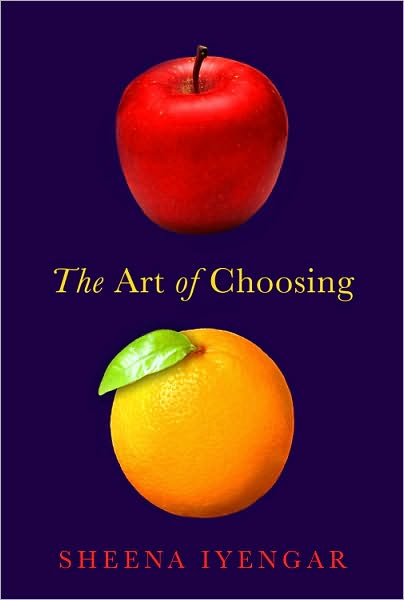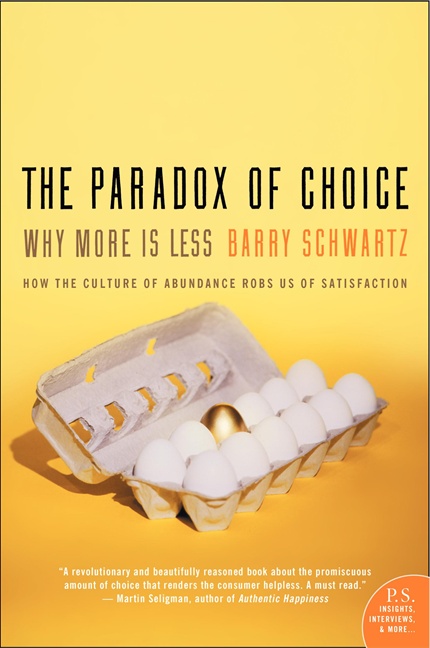Three books on my bookshelf (actually, audiobook library) are about the psychology of choice – how do people make decisions and what helps people feel more satisifed about their choices?

As decribed by Sheena Iyengar in the introduction to Art of Choosing, how much emphasis is placed on individual choice depends on the culture you come from. In the English-speaking world, and the US in particular, a high value is placed on individuals being able to make their own choices. Choice pervades the culture so fully that it is considered to be part of the natural order of things: having choice is seen as axiomatically logical, right and good. But other cultures may put more value on social harmony or professional expertise than individual choice, and may decide that individual choice is not always worth the cost. Indeed, when viewed through a different cultural lens, individualistic cultures look like people value the right to choose over their own self interest at times.
This suggests there is such thing as too much choice, and research bears that out. Iyengar’s most famous study was conducted at a jam display at an upmarket grocery store in California. Customers could come up and try the jams on display, and could then get a discount voucher for purchasing one of the jams on offer. The main thing that they changed over the course of the study was how many jams were on display at any given time: 6 or 24. Although a greater percentage of customers were attracted to the larger display, customers were much more likely to actually buy jam if they only had 6 to choose from at the outset.

This idea is explored further in Barry Schwartz’s The Paradox of Choice. Schwartz describes research that shows that not only does too much choice befuddle us and cause us to procrastinate in our quest to make the “right” choice, we’re often less happy with the choices we *do* eventually make. It seems that having a never-ending array of choices increases the fear we have of making the “wrong” choice, as well as the perpetual possibility that a better option is just around the next corner. It’s a recipe for inertia and dissatisfaction. Schwartz suggests we’d be better off making “good enough” choices that allow us to move on with our lives.

But what if we’re looking to guide the choices of others? This is an idea described in Thaler and Sunstein’s book Nudge. They describe the concept of “choice architecture”, that is, the way you present options to influence the choices people make. Many choices we have to make, like pension plans or energy supplier, tend to be confusing (and let’s face it: not particularly interesting). Rather than read up on all the options, most of us take whatever the default option is, irrespective of whether it’s the one that suits us best or not. In a philosophy they call “libertarian paternalism”, they argue that these default options should be ones that suit most people most of the time. That way, people are still free to make another choice if they wish, but for those who take the default path of least resistance (i.e. most of us, most of the time), we’d end up with a better option overall. We can also use choice architecture to make choices less confusing, for instance by sequentially narrowing down options rather than showing all of them up front.
Now all of this may seem a bit tangential to museum visitor experiences at first glance (although one of the goals of Project 50 is to broaden the scope of this blog a bit). But it shouldn’t take too big a leap of imagination to see that consumer psychology and visitor experiences are linked: the people who are putting off choosing their pension plans on a Wednesday are the same people who are trying to decide what to do to keep the family entertained on a wet Saturday afternoon, or where would be the best place to go on holiday next.
A museum visit is full of choices – from the first decision to visit a museum rather than do something else, then which museum to go to, what exhibitions to visit, what displays to look at, whether to stop at the cafe or buy a gift at the shop, and so on. Consumer psychology and visitor research both show that people like choice, but also they like a manageable number of choices, and they like to know what the consequences of their choices will be. And through understanding people, we can both guide those decisions and help people be happier about the choices they make.





